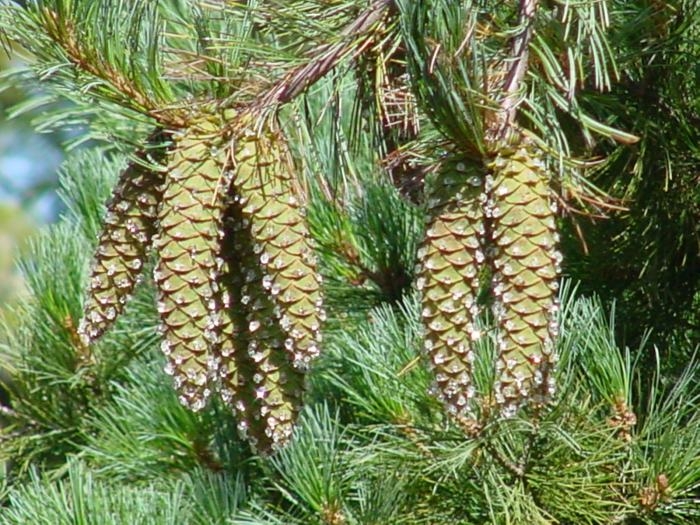Western White Pine
(Pinus monticola)
Western White Pine (Pinus monticola)
/
/

Public domain
Public domain


















































Estimated Native Range
Summary
The Western White Pine is valued for its straight, tall growth habit and its ability to adapt to a range of soil conditions, including poor, rocky soils. It is often used in reforestation projects and as a specimen tree in large gardens and parks. The tree’s ability to grow in full sun to part shade and its moderate water requirements make it suitable for various landscape settings. However, it is susceptible to white pine blister rust, a serious fungal disease, and care should be taken to plant resistant cultivars where this disease is prevalent. Additionally, the tree is not recommended for small gardens due to its large size and potential for root system expansion.CC BY-SA 4.0
Plant Description
- Plant Type: Tree
- Height: 36-75 feet
- Width: 18-24 feet
- Growth Rate: Rapid
- Flower Color: N/A
- Flowering Season: Non-Flowering
- Leaf Retention: Evergreen
Growth Requirements
- Sun: Full Sun, Part Shade
- Water: Low, Medium
- Drainage: Fast, Medium
Common Uses
Bird Garden, Border Plant, Deer Resistant, Drought Tolerant, Fragrant, Low Maintenance, Rabbit Resistant, Rock Garden
Natural Habitat
Subalpine and montane forests in the Western United States and British Columbia
Other Names
Common Names: Idaho White Pine, Mountain White Pine, Silver Pine, California Mountain Pine, Westliche Weymouthskiefer, Gebirgsstrobe, Westliche Weymouths-Kiefer, Pin Argenté, Pin Blanc De L’Ouest, Pin Montagnard
Scientific Names: , Pinus monticola, Pinus strobus subsp. monticola, Pinus grozelierii, Pinus monticola f. porphyrocarpa, Pinus monticola var. digitata, Pinus monticola var. minima, Pinus monticola var. porphyrocarpa, Pinus porphyrocarpa, Pinus strobus var. monticola
GBIF Accepted Name: Pinus monticola Douglas ex D.Don